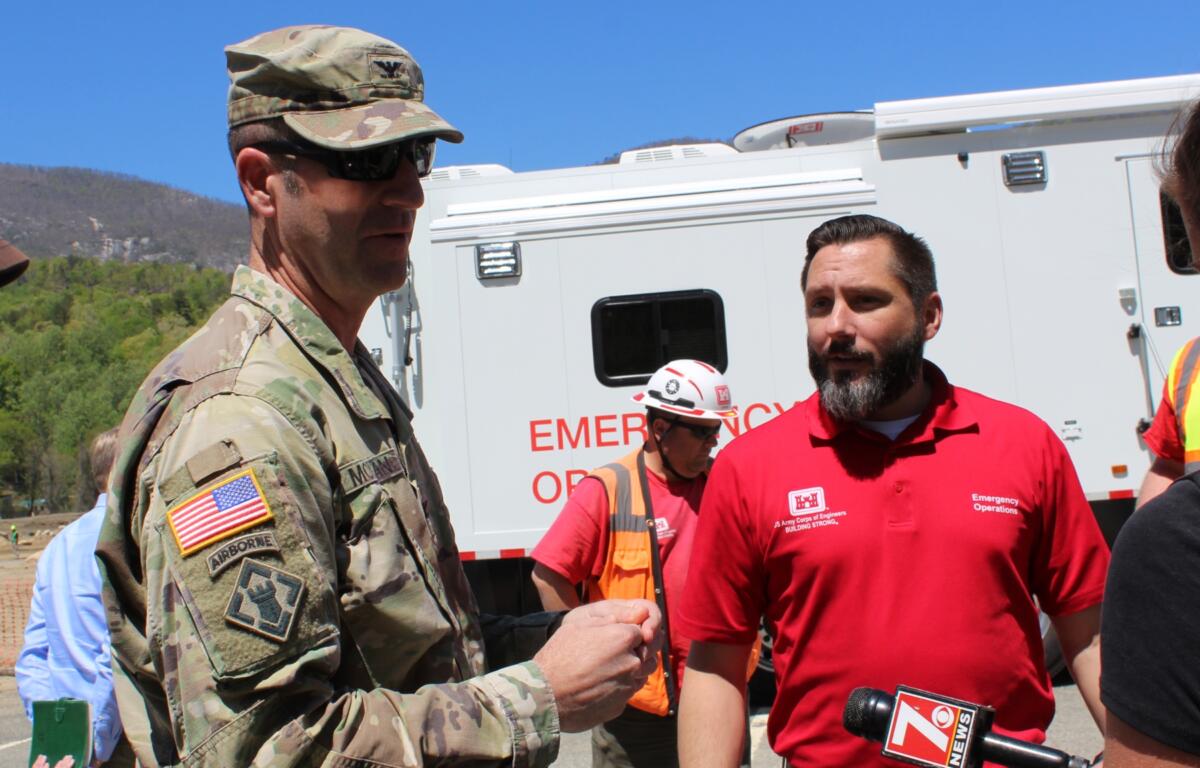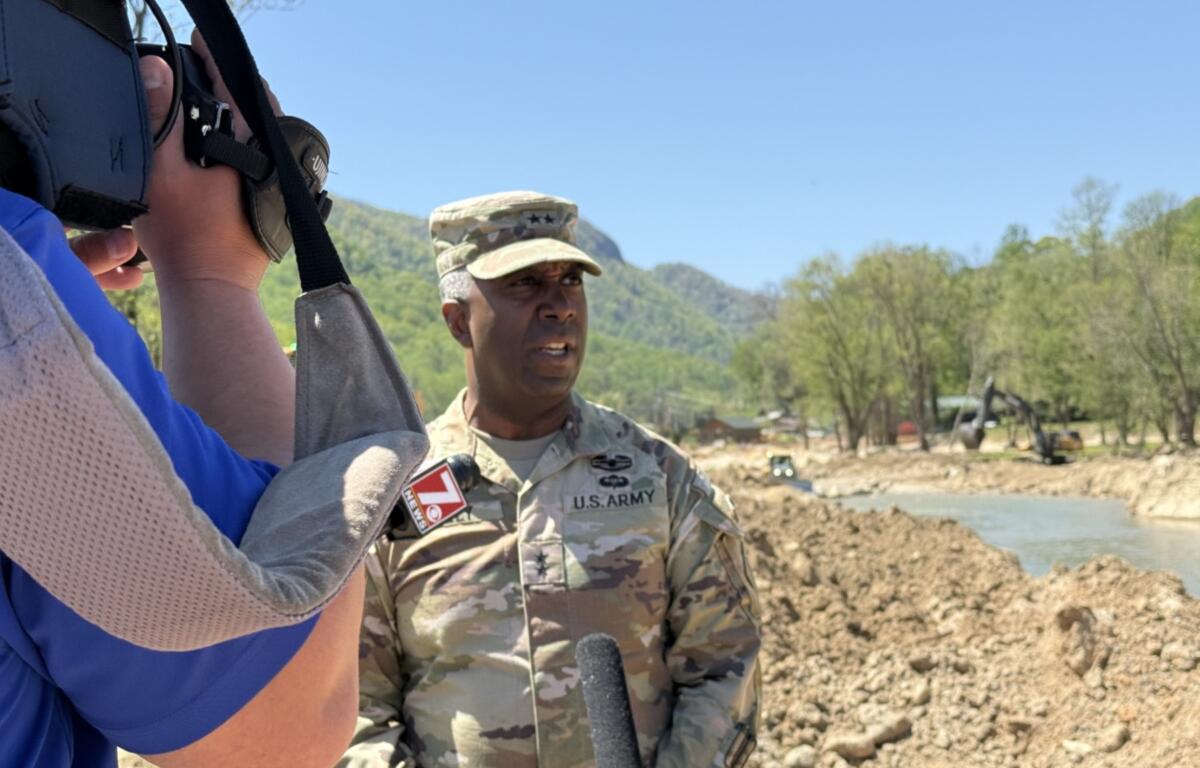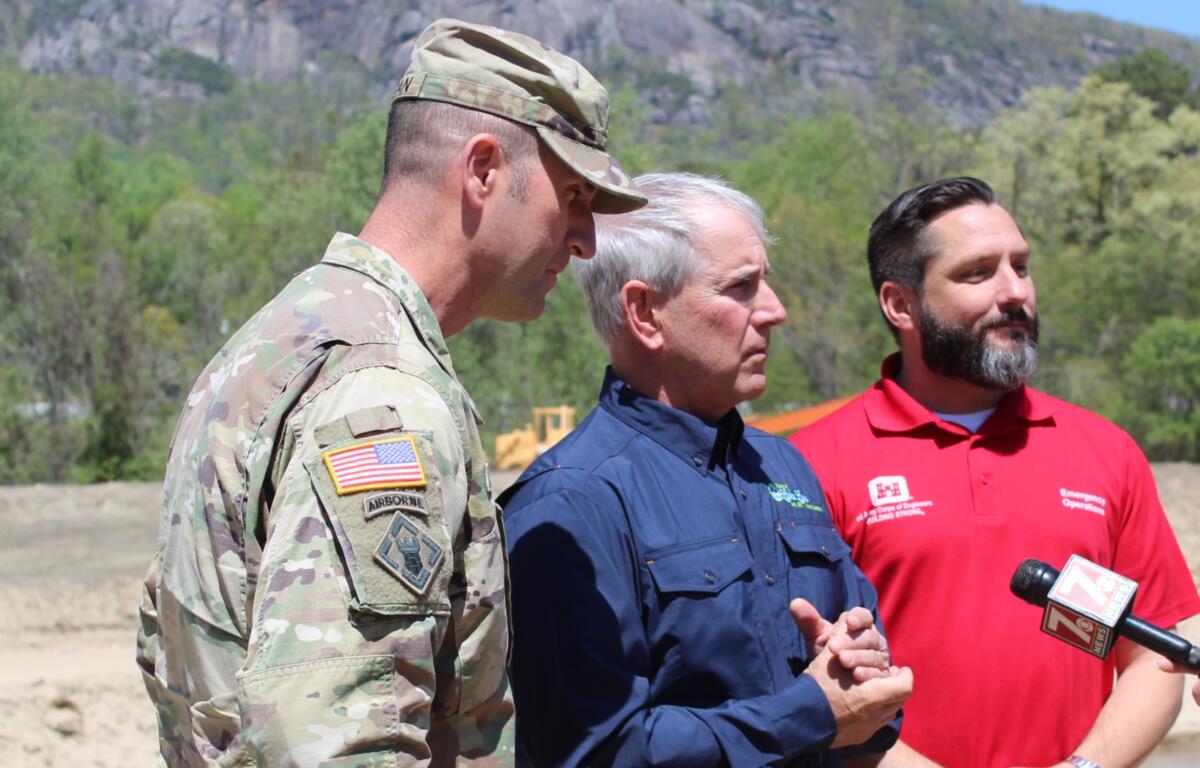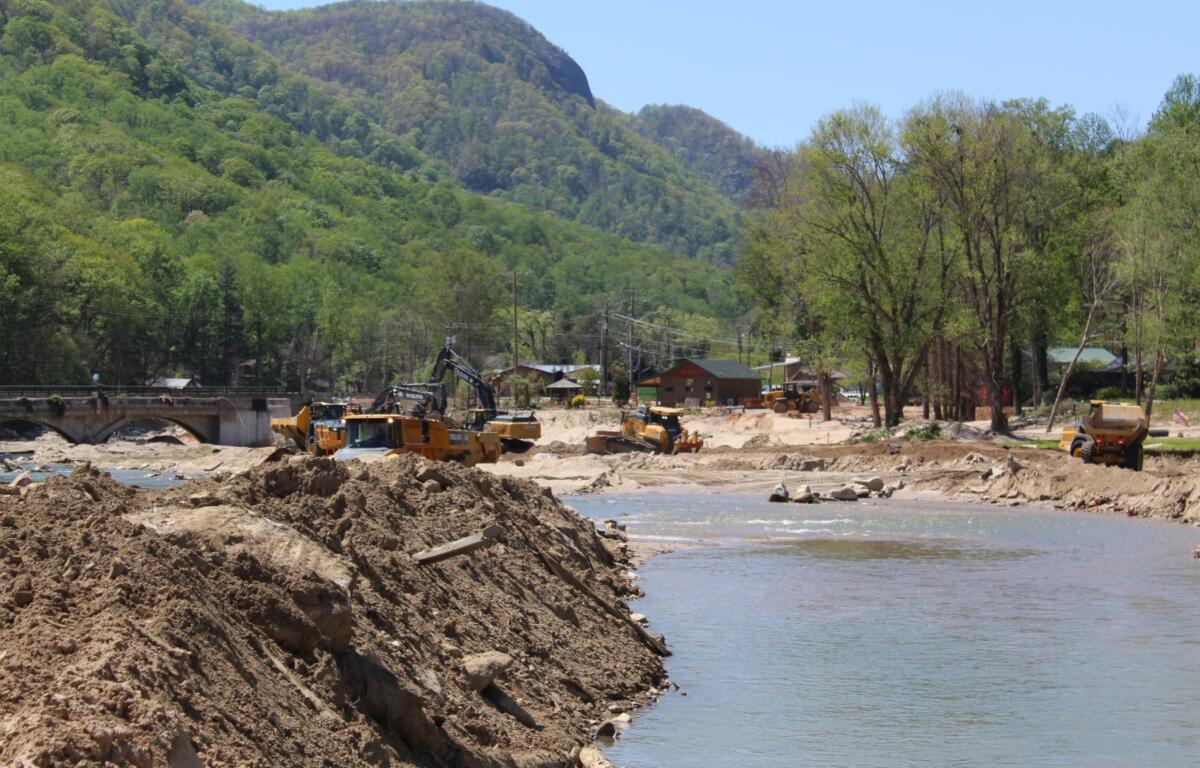LAKE LURE, N.C. (828newsNOW) — When two 28-foot-high waves plowed into Lake Lure on Sept. 27, it brought tons of sediment and debris into a once pristine mountain lake.
Fallen trees and damaged bridges trapped the sediment and created a major buildup where the Broad River flows into Lake Lure. Now, the U.S. Army Corps of Engineers, under FEMA authority, is removing the massive deposits to help restore Lake Lure’s natural beauty and ensure the waterway is safe and accessible again.
“We’ve done a pretty robust drawdown of the lake in coordination with the town to expedite the cleanup process,” U.S. Army Corps of Engineers Debris Subject Matter Expert George Minges said. “We’re looking forward to what we can accomplish here in partnership with the town — helping them remove debris and restore the lake to something a little closer to normal.”
As of April 13, the lake level was about 980.68 feet above mean sea level. The goal is to lower the lake to 978 feet to support ongoing efforts to remove submerged debris, silt and sediment.
The USACE has been clearing debris for more than 200 days and marked the milestone with a brief tour with reporters around part of the lake Wednesday.
Logs, construction and demolition materials, steel beams, golf carts and home appliances have been pulled from the lake, USACE officials said.

Col. Brad Morgan, commander of the U.S. Army Corps of Engineers’ Wilmington District, said the initial focus was on floating debris.
“We’ve largely finished the surface debris removal operation here within the lake, so we’ve started going deeper, pulling additional submerged debris,” he said.
TOWN IS OPEN EVEN IF LAKE IS NOT, LAKE LURE OFFICIALS SAY
Morgan was not sure how much debris was being removed from the lake daily, but he said he expects 1 million cubic yards to be removed before the project is completed by the end of the summer.
Maj. Gen. Jason Kelly, the USACE deputy commanding general for Civil and Emergency Operations, said the area’s steep terrain made recovery operations more difficult.
“As I moved around here, I was able to travel switchbacks and I think about the difficulty of placing a dump truck in reverse,” he said, shaking his head. “And you’re seeing that on this site. To bring heavy equipment here, the terrain here is very, very difficult. It’s a tough mission.”

Lake Lure Mayor Pro Tem David DiOrio said the town was resigned to having limited lake access this summer.
“There are two major things we are focused on right now. And that is getting our Chimney Rock State Park open, which is right up the road here. And getting Lake Lure healthy again,” DiOrio said.
“Because the people of Lake Lure see the Army Corps of Engineers here and the work that they do, it inspires all of us. It gives us courage to get over that hump until we start to be, you know, actually getting back to to full normal again.”
DiOrio said preliminary water testing do not show any indication of any leaching of any volatile organic chemicals into the lake.

“The lake is really resilient. We haven’t seen a big impact on wildlife,” he said. “I think the resiliency of the lake will start to come back with the clearing of the debris.
“Safe water and navigable water open to recreational water sports is really the heartbeat of the community, and so once we get that debris out, there is no longer a threat of having sort of a potentially hazardous situation and and then all the water should be opened up again. We’re hoping for the best.”
WORK REMAINS, BUT SOME CHIMNEY ROCK SHOPS COULD REOPEN BY JUNE
Over the past 200 days, USACE has:
- Removed more than 4.4 million cubic yards of debris total
- Cleared debris from 2,200+ private properties
- Cleared 2.4 million cubic yards from critical waterways
- Deployed 1,383 dedicated USACE personnel to support the mission








